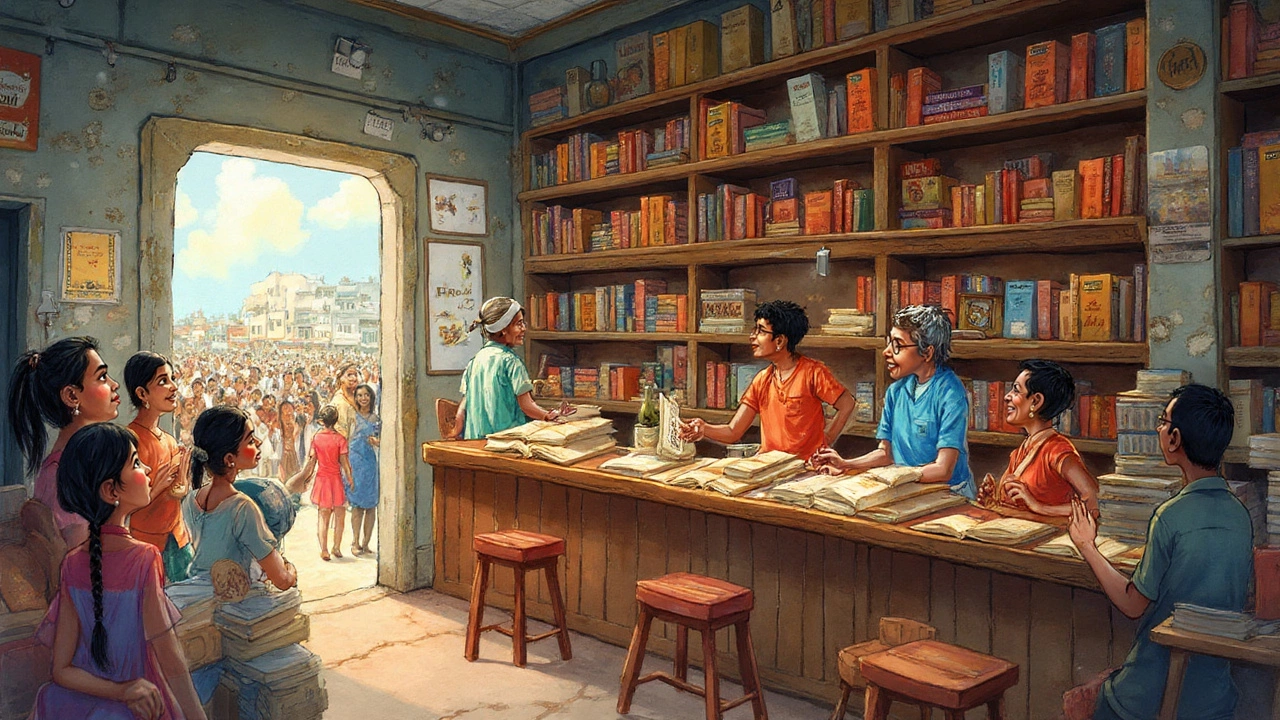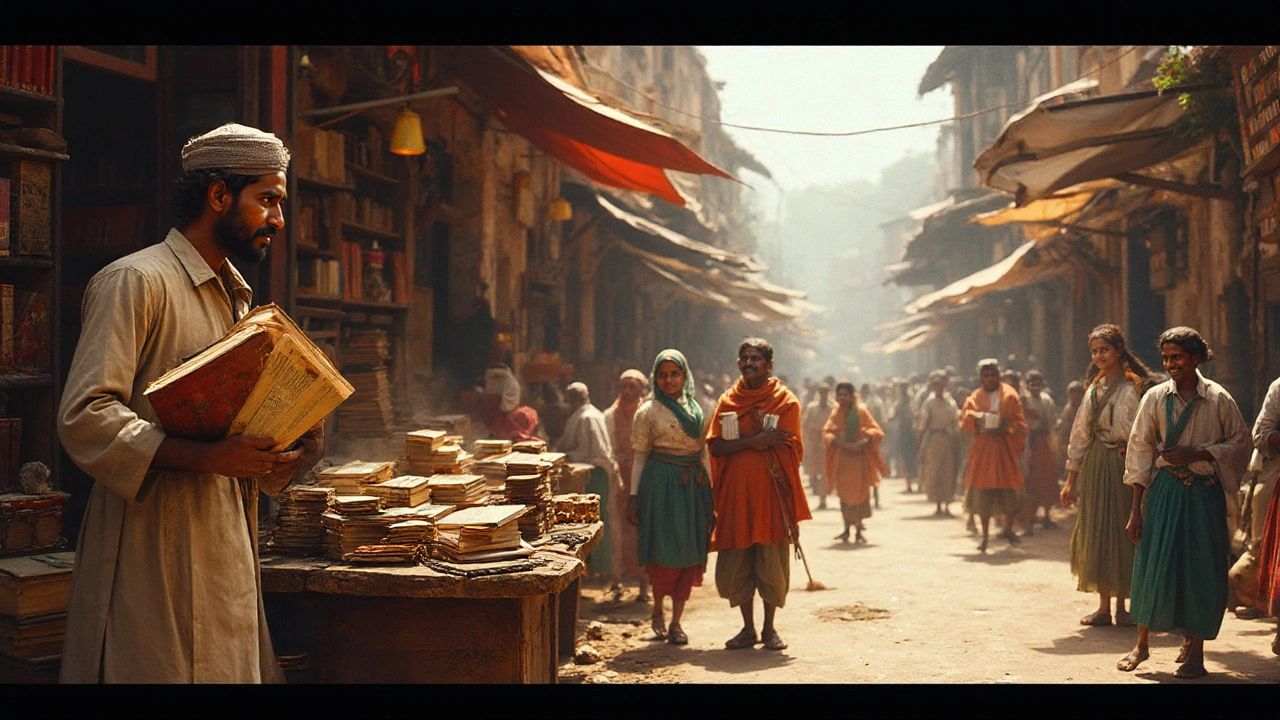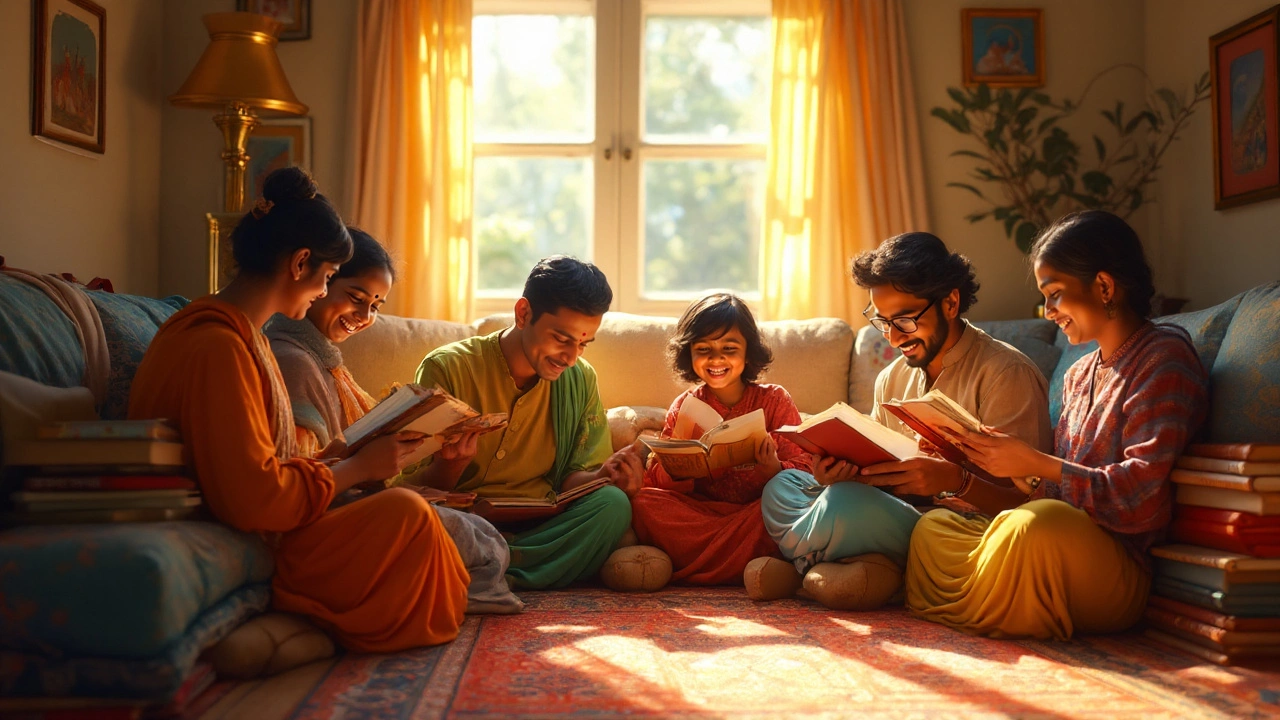It’s funny how arguments about the most sold out book of all time spark endless debates—some people want to credit Rowling or Tolkien, others think it’s an old classic, and some even drop the Bible like a trump card. The truth is, the answer is not as straightforward as picking a single title off the shelf. Piles of sales records, translation stories, and hidden controversies make it a bit of a rabbit hole. Still, one thing is clear: the chase to name the world’s most popular book gives us a peek into cultures, moments in history, and what people actually love to read.
The Real Contenders: What Books Are in the Race?
If you imagine a bookshelf lined up with all the best-selling books, it would look a bit strange. On one end, you’d see the usual suspects like Harry Potter and the Philosopher’s Stone, The Lord of the Rings, and Charles Dickens’ A Tale of Two Cities. But the real heavyweight always comes back to religious texts—and that is where the chart-topping “most sold book” sits. The Bible is, hands down, the book that has moved the most copies. If you’re looking for numbers, we’re not talking about a few hundred million copies. The Guinness World Records puts Bible sales at somewhere north of 5 billion as of recent counts. That includes all languages, countries, prints, and editions—because it’s been around, well, basically forever by book standards.
Now, let’s pause here for a second: why is the Bible so far in the lead? The answers are as multi-layered as a French onion soup. First, its history spans centuries and it’s foundational to huge parts of the world. Second, churches and missionary groups distribute it free all the time. And third, it’s been translated into over 3,450 languages for at least parts of it, which is wild—imagine reading the same story in languages you didn’t even realize existed.
But if you set aside religious books and go with strictly “published by an author for the general market,” then things get interesting. Classics like Don Quixote and The Little Prince make massive appearances. According to Publisher’s Weekly and a lot of tracking shops, Don Quixote has about 500 million copies to its name, and The Little Prince somewhere upwards of 140 million. J.K. Rowling’s Harry Potter and the Philosopher’s Stone, since its 1997 launch, has sold over 120 million, but the figure for the whole series hovers at an eye-watering 600 million as of 2025.
For folks who like hard numbers (I do), here’s a quick look at sales in a table:
| Book Title | Author | Estimated Copies Sold | Year of First Publication |
|---|---|---|---|
| Bible | Multiple/various | 5+ billion | First century CE (approx.) |
| Quotations from Chairman Mao Tse-tung | Mao Zedong | 1.1 billion | 1964 |
| Harry Potter series | J.K. Rowling | 600 million | 1997–2007 |
| Don Quixote | Miguel de Cervantes | 500 million | 1605 |
| The Lord of the Rings | J.R.R. Tolkien | 150 million | 1954 |
This table only scratches the surface. As you can see, religious and political books tend to dominate. Still, when it comes to novels, the classics and fantasy adventures have staked their claim in the bestsellers club.
The Bible: More Than a Book
It’s almost impossible to talk about the best-selling books without lingering on the Bible for a while. Its numbers are simply staggering—that 5 billion figure isn’t just sales but also includes copies distributed for free, given in hotels, and passed down in families. If you put five billion Bibles in a stack (not that you’d want to), you’d have a tower reaching far beyond the International Space Station!
But besides the wild sales stats, what’s nuts is the translation effort. There’s a team called Wycliffe Bible Translators who have a whole operation dedicated to getting at least a part of the Bible into every language spoken on Earth. They run surveys, send linguists to remote villages, and work to make sure every version is accurate, even if it means inventing new alphabets first. This is a monumental push—no other book in history comes close.
It’s not only about religion, either. The Bible’s stories, phrases, and metaphors have seeped all the way into pop culture. You ever hear, “forbidden fruit,” “the writing on the wall,” or “a drop in the bucket?” Thank the Bible. These days, when companies talk about a “must-read,” or people debate banned books, it’s the Bible that’s both banned and best-sold at the same time—talk about irony.
There’s room for surprises, too. A few years ago, Delia, my wife, walked into a budget hotel room in Florida and found a Bible in the nightstand drawer. Who’s behind all those hotel Bibles? It’s mostly the Gideons, who’ve handed out more than two billion Bibles since 1908. If you stay in hotels regularly, you’ve probably seen their handiwork. It’s stuff like this that pushes the numbers sky-high and keeps the Bible unbeatable.
One more weird twist: during major world events, Bible sales often spike. For example, after 9/11 and at the start of the COVID-19 pandemic, bookstores and online shops reported upswings in Bible purchases as people searched for comfort and meaning. Turns out, bestsellers aren’t just about marketing—they reflect the times.

When Politics Collides with Sales: Mao’s Little Red Book
Now, what if I told you there’s a book that sometimes beats every fiction novel in sales—except it was basically required reading in one of the world’s most populous countries? That book is Quotations from Chairman Mao Tse-tung, better known as Mao’s Little Red Book. In the 1960s and 1970s, China distributed well over a billion copies to its citizens, army, and beyond. For a while, it was a badge of loyalty and sometimes, literally, a requirement for school or work.
If you think about it, forced distribution isn’t quite the same as people racing to bookstores—yet, it counts in the numbers game. Still, few works of political doctrine have become as physically widespread. Its impact on education, politics, and even pop culture in Asia is unlike any other single book printed in the last 60 years. Compare that to Dickens or Rowling, who relied on readers’ passion and personal wallets to rack up their numbers—it shows how different kinds of books can climb the charts for wildly different reasons.
Even when state-mandated, the book’s reach is hard to ignore. Whole factories once stopped machinery three times a day to hold readings. Young school kids and elderly farmers alike quoted its passages by heart. You won’t see this kind of process with any other bestseller on the list, and it makes Mao’s Little Red Book a fascinating anomaly.
On the collector’s market, early editions of the Little Red Book have become oddball treasures for history buffs—a thin, red paperback that changed the course of 20th-century China. So, while it’s not topping many personal reading lists today, its sheer scale earns it a solid place in the “most sold” book conversation.
Bestselling Novels: What Makes Fiction Fly Off the Shelves?
Let’s get real: religious and political books aside, what fiction novels truly explode in sales? Fantasy, mystery, and epic adventure have always dominated here. Think about J.K. Rowling’s Harry Potter mania—queues at midnight book launches, people reading in coffee shops, headlines about families fighting over the last copy at Walmart. Rowling’s series scored a breathtaking 600 million sales for all seven books combined, making it the undisputed king among modern fiction giants.
But Harry’s not alone. Take Tolkien’s The Lord of the Rings: first published in the 1950s, this fantasy epic quietly built a global cult. When the Peter Jackson movies hit, fresh readers snapped up the books all over again, adding another 150 million copies to Tolkien’s tally. Then there’s A Tale of Two Cities (200 million), The Little Prince (140 million), and And Then There Were None by Agatha Christie (100 million and counting). They owe their enduring power to relentless word-of-mouth, re-releases, school reading lists, and adaptations for nearly every major language.
But these books didn’t just sell heaps of copies. They wormed their way into the global psyche. When Paris faces a snowy winter, someone inevitably quotes A Tale of Two Cities about “the best of times, the worst of times.” Walk through a Tokyo bookshop and you will definitely spot a paperback copy of The Little Prince—it’s a universal language of whimsy and longing.
Ever wonder what makes a novel catch fire? Timing, marketing, and a universal theme all play a role, but there’s still a bit of mystery. No one predicted that Rowling, a single mom in Scotland, would become a household name. Tolkien’s fantasy nerds were once mocked—and now he’s practically a cultural saint. These stories prove you can’t quite manufacture a bestseller: lightning has to strike, and once it does, you have to bottle it fast.

Strange Journeys and Sales Secrets: How Books Go Viral
The ways books become sales monsters are sometimes quirky and even sneaky. Let’s break down some insider moves and odd facts behind blockbuster sales:
- most sold book numbers don’t always reflect genuine reader passion. Sometimes, mass orders by governments or organizations tip the scales—like Mao’s Little Red Book or the Bible.
- Translation is a huge driver. Books like The Little Prince (from France) owe their worldwide status to being accessible in 300+ languages. Harry Potter is right behind, available in over 80.
- Film and TV let books ride a media wave. When a movie adaptation hits, book sales often double or triple in months. Visual storytelling brings in fresh generations.
- Schools and educational policies often make required reading out of otherwise obscure works. Think how George Orwell’s 1984 explodes in sales every election year or when new surveillance laws are in the news.
- Some bestsellers have a “stealth mode”—they travel in cheap, pocket-sized editions, enter hotel rooms (like the Bible via Gideons), or even get bundled with cereal in promotions.
- Special anniversaries or viral TikTok trends spark surprise comebacks. Sales are rarely steady—watch for sudden spikes that rewrite the charts, especially with young readers.
- Book piracy and unofficial translations muddy the waters. It’s nearly impossible to count actual readers, only official sales.
The most fascinating part? No matter how many times the winner is crowned, new challengers pop up every other decade. Maybe it’ll be a classic reborn as a new Netflix hit, or the next cult sensation from some unknown author. If you want to sniff out the next big “most sold book,” watch the world—follow what people are talking about on Reddit threads, scan bestseller lists, and look for books that cross borders and languages fast.
All this might make you wonder: why do we care so much about the most sold out book, anyway? Part of it’s just the pure thrill of the numbers game, but it’s also a window into how ideas, stories, and beliefs travel across generations.

